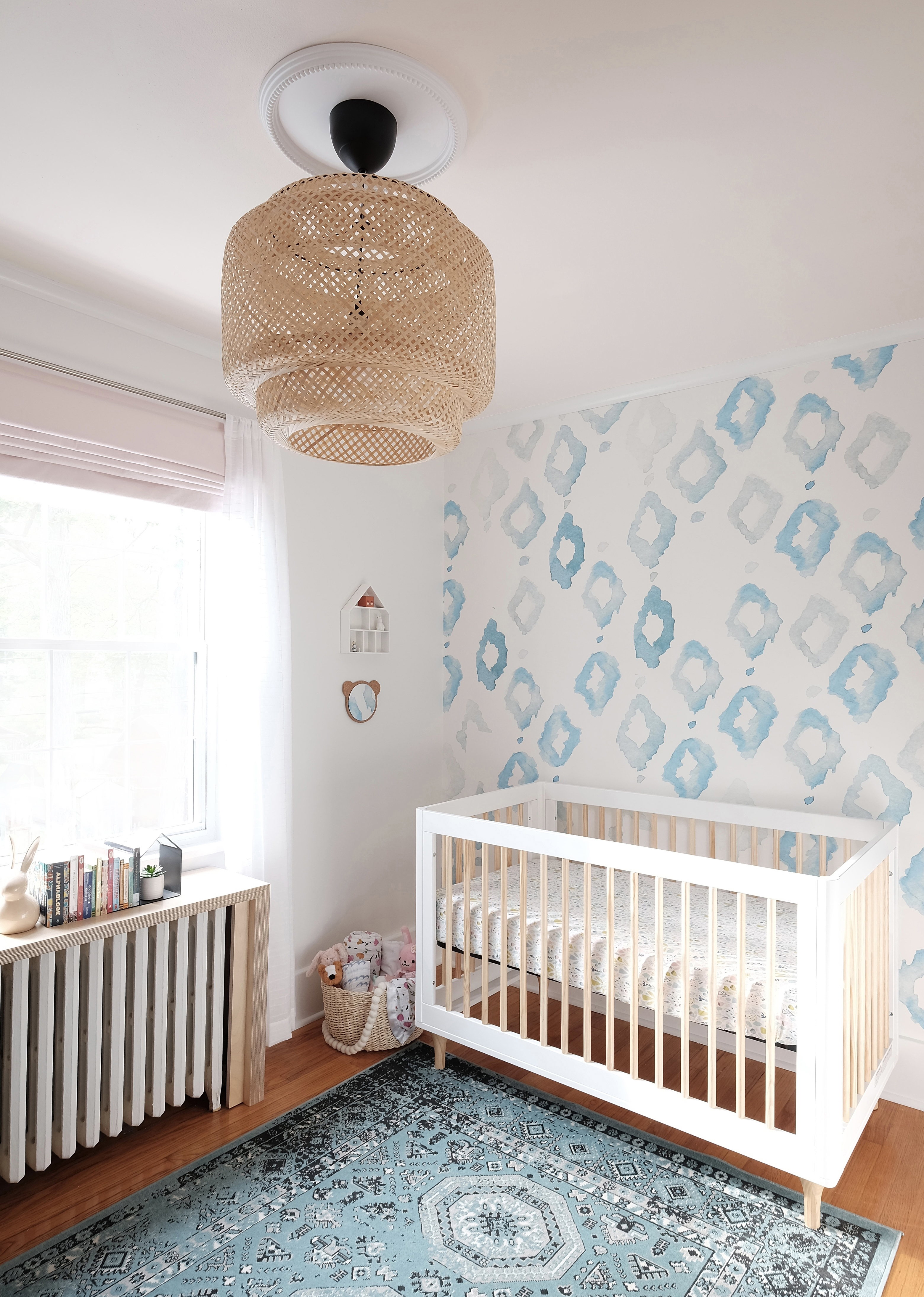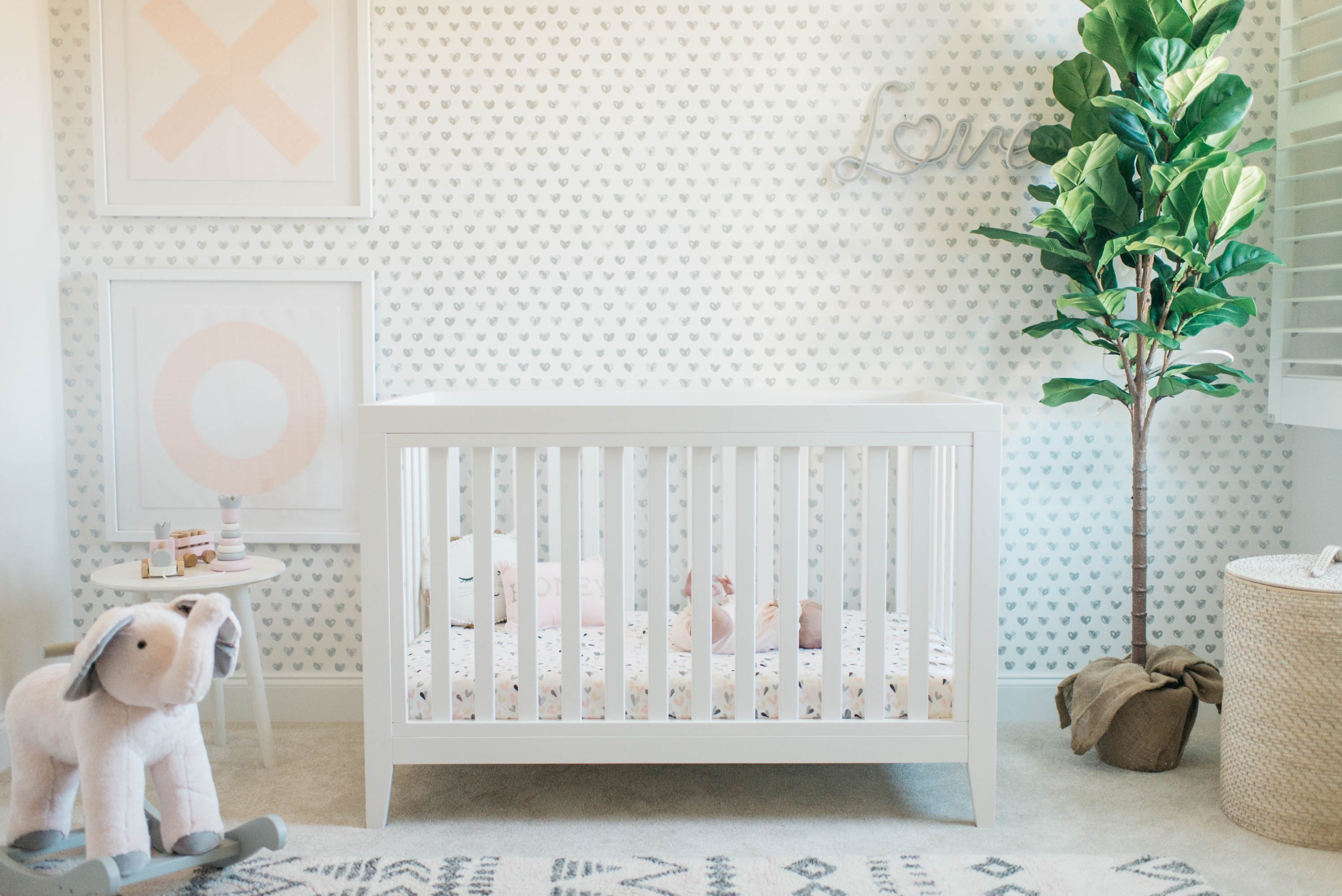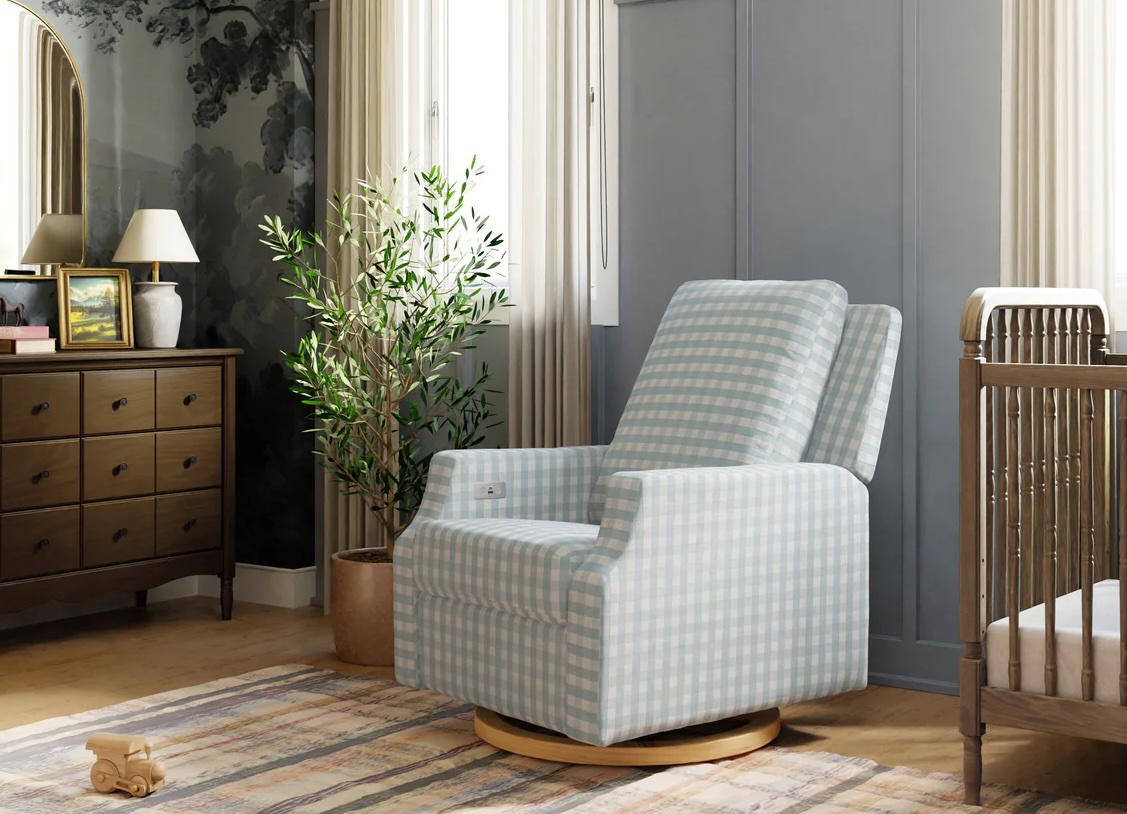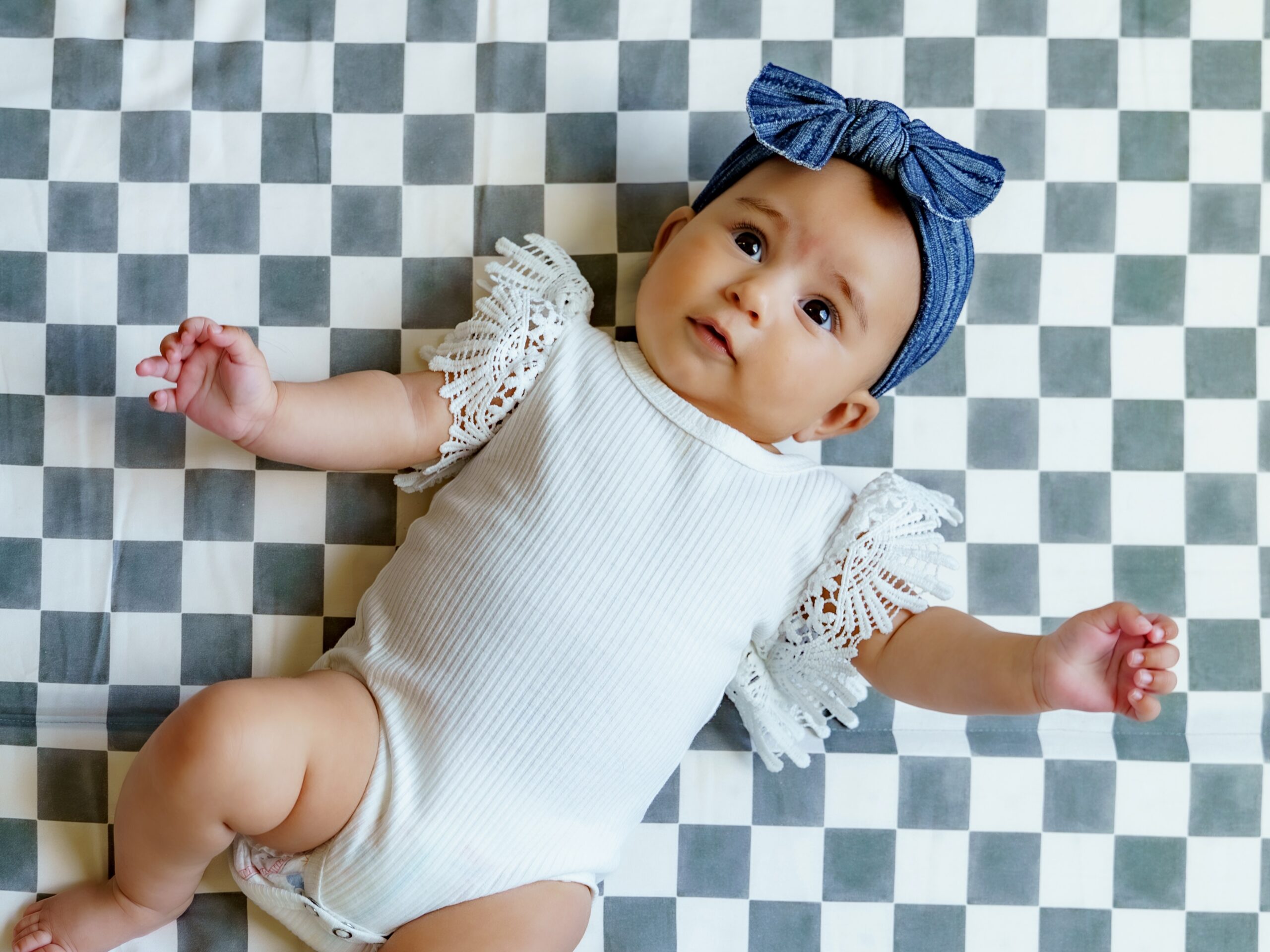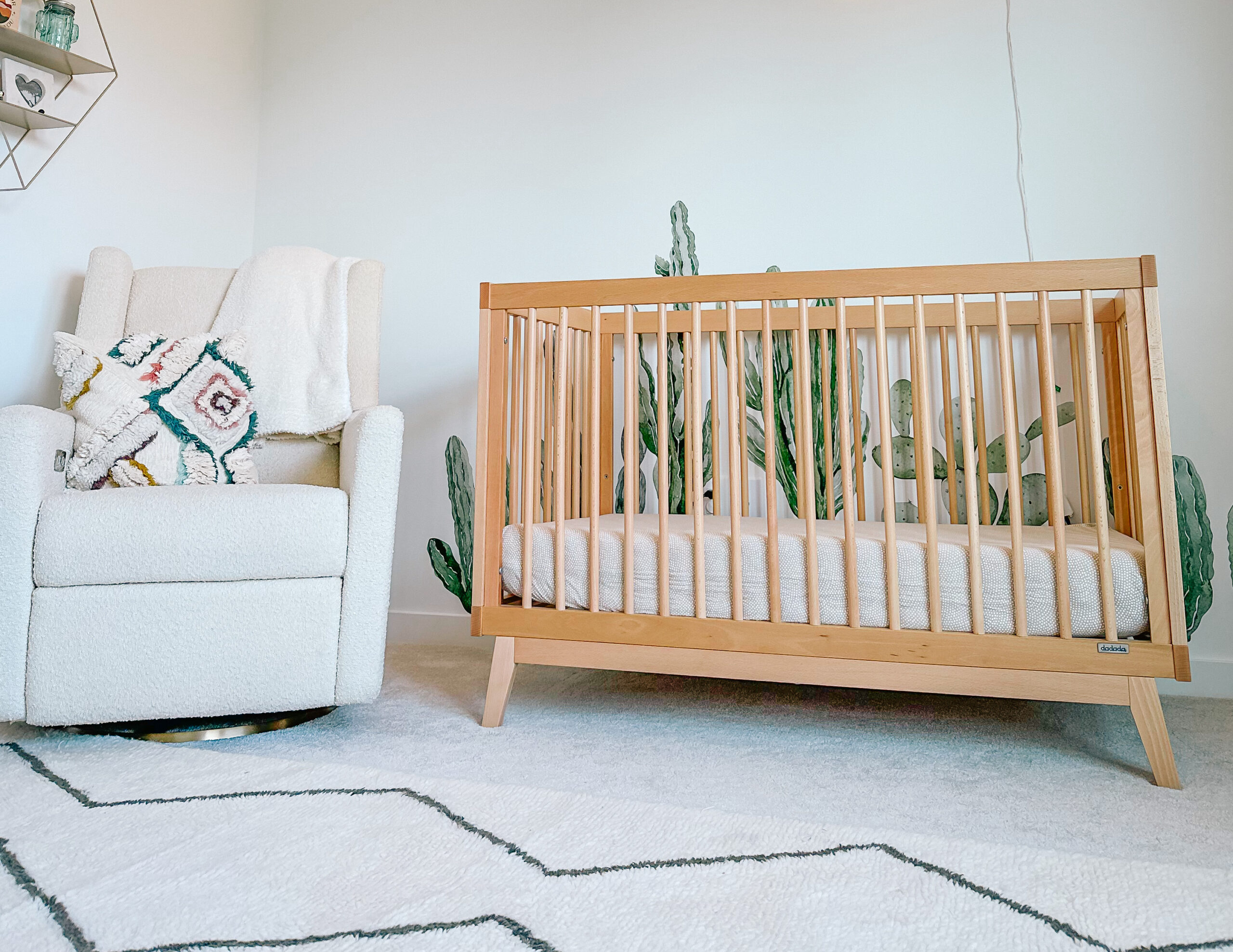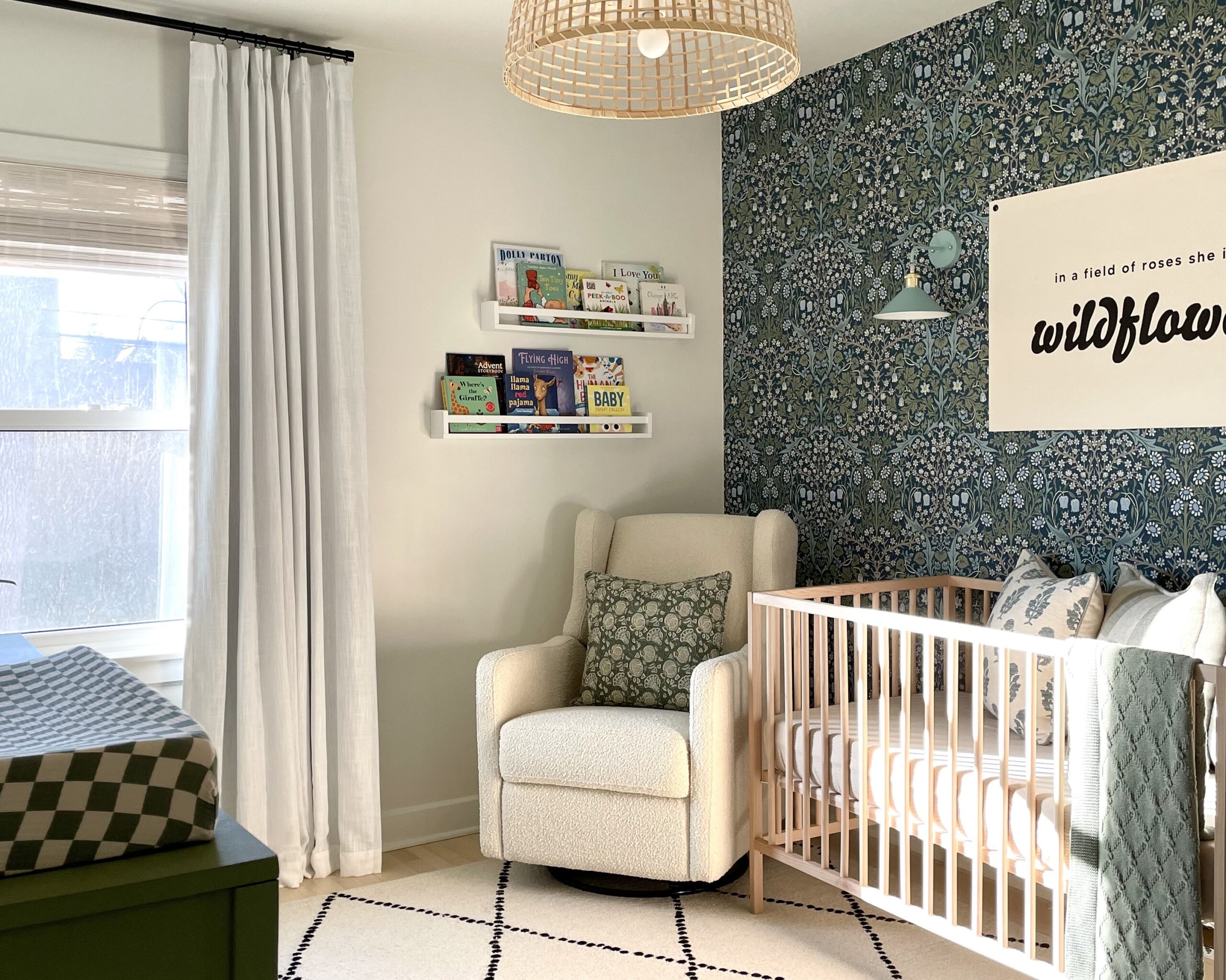If you had asked me two years ago if I would ever put up wallpaper in my home, I would have laughed and said you were crazy. After all, we spent months working room to room pulling down layer after layer of wallpaper from our well-loved home when we moved in. However, there is only so long that you can stare at the gorgeous wallpaper choices that are now available and keep up that hard line. So sure enough I ended up with a beautiful wall mural in my daughter’s nursery—and I still love it!
So first of all, what’s the difference between wallpaper and a wallpaper mural? Traditional rolls of wallpaper have the same pattern on every roll, and the pattern matches up edge to edge as you repeat the strips down the wall in any order. A mural, on the other hand, has a non-repeating pattern and is a large image (even if it looks like a pattern) that is broken up into strips that MUST be applied to the wall in the right order. For example, my nursery wall mural had five strips and they were numbered 1-5 on the back and were applied left to right to create the full image.
The good news is that new wallpaper is not 100 year old wallpaper. And if you take the time to prepare your wall prior, removal should be a cinch (fingers crossed!). I primed the wall before application to really help with easy removal. If you do that too, make sure the primer has a proper amount of time to cure before applying your wallpaper—read your paint can! The other key to getting great results is to measure well. You know that old saying measure twice, cut once. Well, we say measure three times, order once!
Today we have our very own Katie from The Project Nursery Shop to tell us step by step how to measure your room in preparation of a wall covering order whether it be a wall mural or traditional rolls of wallpaper. Keep in mind these are best practices that the shop has learned over time. Always make sure you also read the directions from the wallpaper you select for best results.
How to Measure for a Wallpaper Mural
Some of our most popular wallpapers on Project Nursery, such as the Jolie Wallpaper below, are actually murals, and they’re so easy to measure for. For wallpaper murals, all you’ll need to do is calculate the width and height of your wall in inches. There’s no need to consider pattern repeats—just a simple measurement will do!
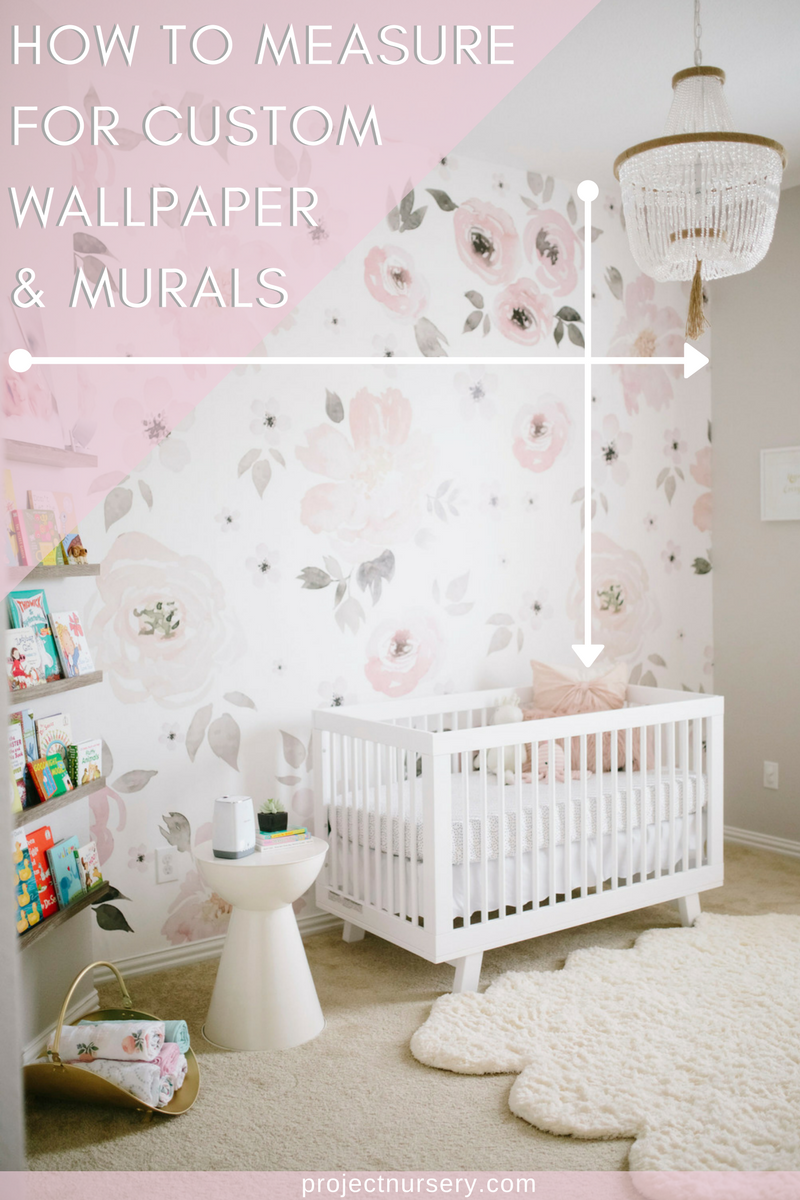
That being said, it’s best if you have the exact measurements of your wall before proceeding with a wallpaper mural order. While you may know that your wall is about 10-feet long with 8-foot ceilings, the more precise you can be with your measurement, the more likely you are to have success with your wallpaper mural order. (You’d be surprised by how many people come up short because they guestimated!)
Many of our wallpaper murals on Project Nursery come in a standard size—such as 150″ w x 108″ h. If your wall is larger than the size in the product listing, in either dimension, you’ll likely need a custom order. And, the same is true if your wall is significantly smaller! Believe it or not, a custom size may be more cost-effective.
While most mural wallpapers include 1-2″ of extra material around your mural to allow for installation, if you’re concerned your measurements are exact or if you live in an older house with walls that may not be perfectly straight, consider adding a few inches to each side, just to be safe.
It’s also important to note that if you’re covering more than one wall in a room, and those walls connect at a corner, you may need to order one continuous custom mural, rather than simply placing an order for two murals. This will allow the wallpaper designer to create a wallpaper mural that will move from one wall to the next without any interruption in the pattern.
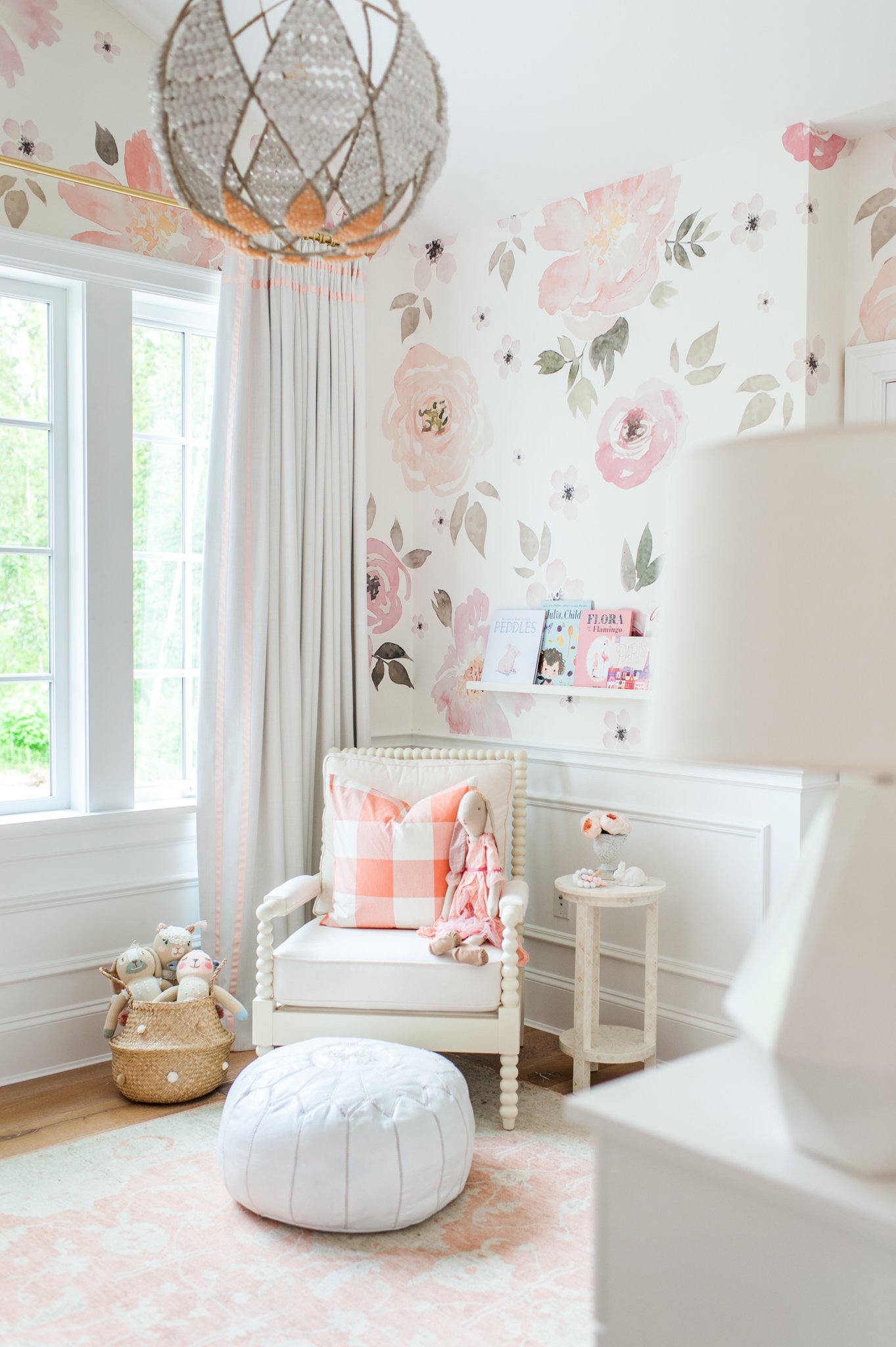 Example of Jolie Mural continued across corners in Monika Hibbs Nursery
Example of Jolie Mural continued across corners in Monika Hibbs Nursery
How to Measure for Traditional Wallpaper
Traditional wallpaper is ordered by the roll, and each roll has the same pattern from top to bottom. There is typically a vertical repeat listed for traditional wallpapers, meaning that, for example, every 24-inches down the roll, the pattern repeats itself.
To calculate how many rolls you’ll need to order to cover your space, you’ll need to measure the width and height for your walls/room, but you’ll also need more information about the wallpaper you’re ordering, such as the size of each roll and what the vertical repeat is.
To walk you through the steps to measure for wallpaper, we’ll use the example of covering a wall that’s 150-inches wide by 108-inches high.
The first step is to modify your wall height calculation to account for the vertical repeat. Divide the height of your wall in inches by the vertical repeat of each roll (the vertical repeat will be listed in the wallpaper description). In this example, we’ll use a wallpaper with a 24-inch repeat. Divide 108-inches by 24-inches, which is 4.5. Round up to 5, which is the number of times the pattern will need to repeat itself on each panel.
Lastly, divide the square footage of your wall by the square footage of each panel, which will give you the number of rolls you’ll need for your wall. In this example, 130-square-feet divided by 30-square-feet, which gives us 4.33. Round up to five rolls of wallpaper.
For all wallpaper orders, both murals and traditional wallpaper, make sure you’re calculating the size of each wall at its widest and tallest.
If you’re ordering wallpaper or a wallpaper mural from The Project Nursery Shop, we’re happy to help you figure out how much you’ll need. Please email shop@projectnusery.com for additional details.
Please note these are only suggestions and wallpaper calculations may vary based on the wallpaper you choose and the space you’re covering. Project Nursery is not responsible for any wallpaper orders based on these calculations.
SaveSave
SaveSave
SaveSaveSaveSave
SaveSave
SaveSave

